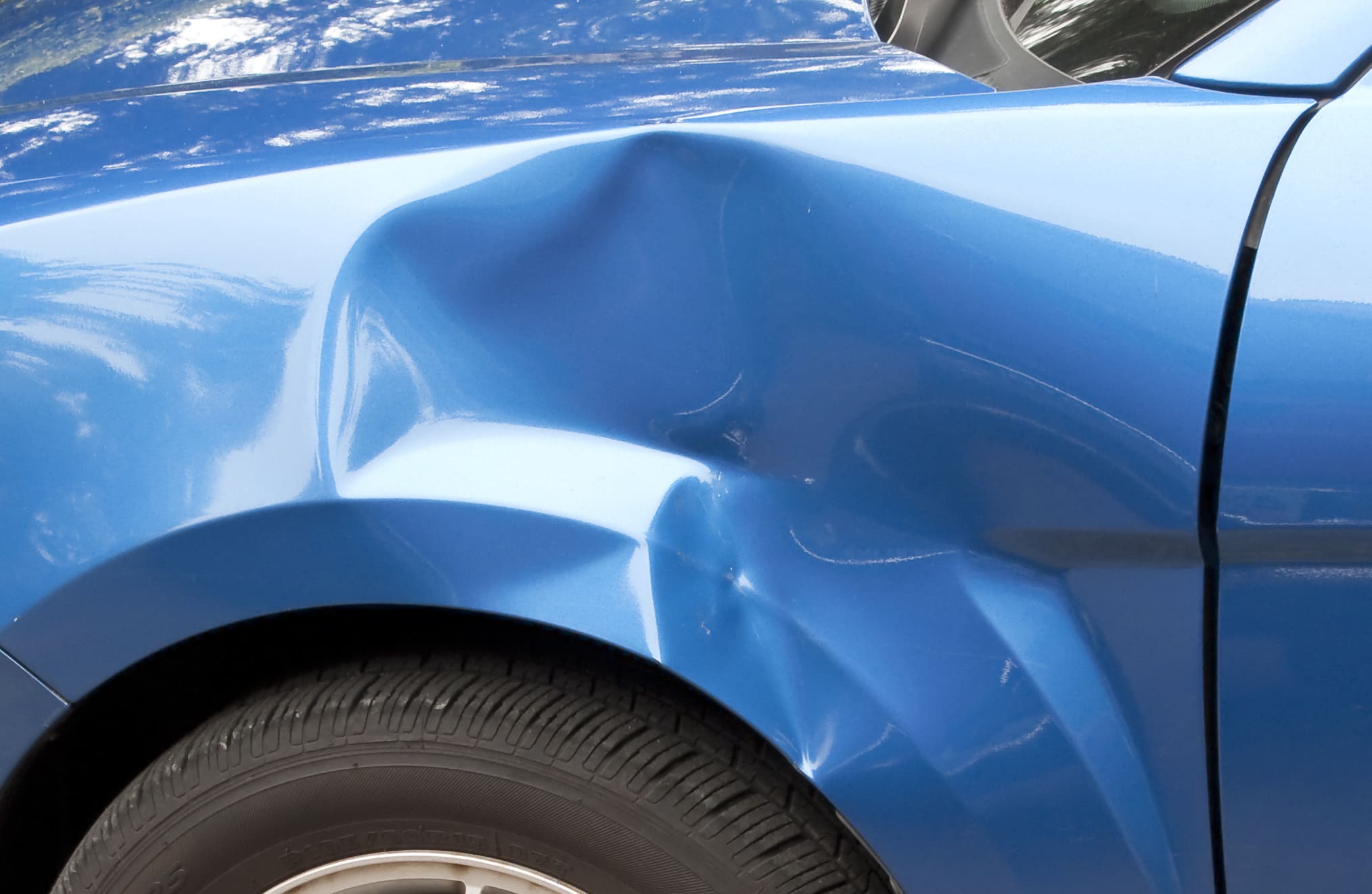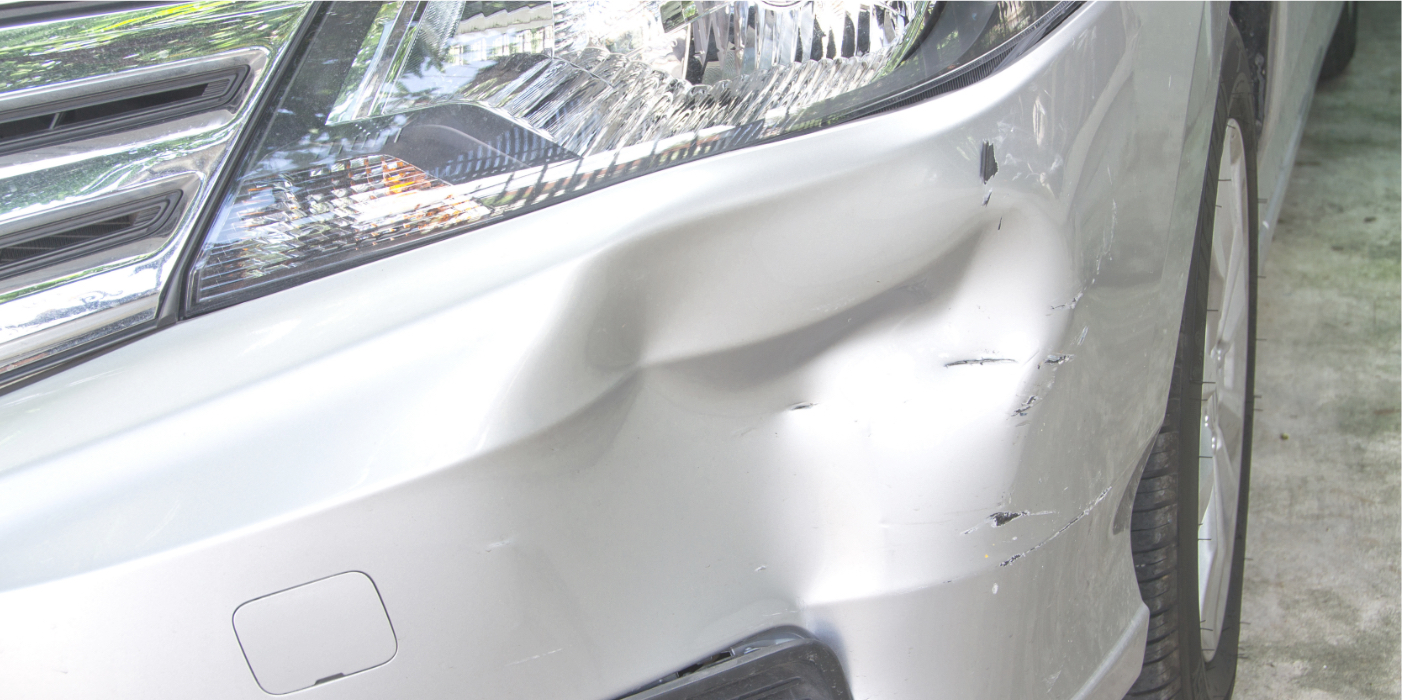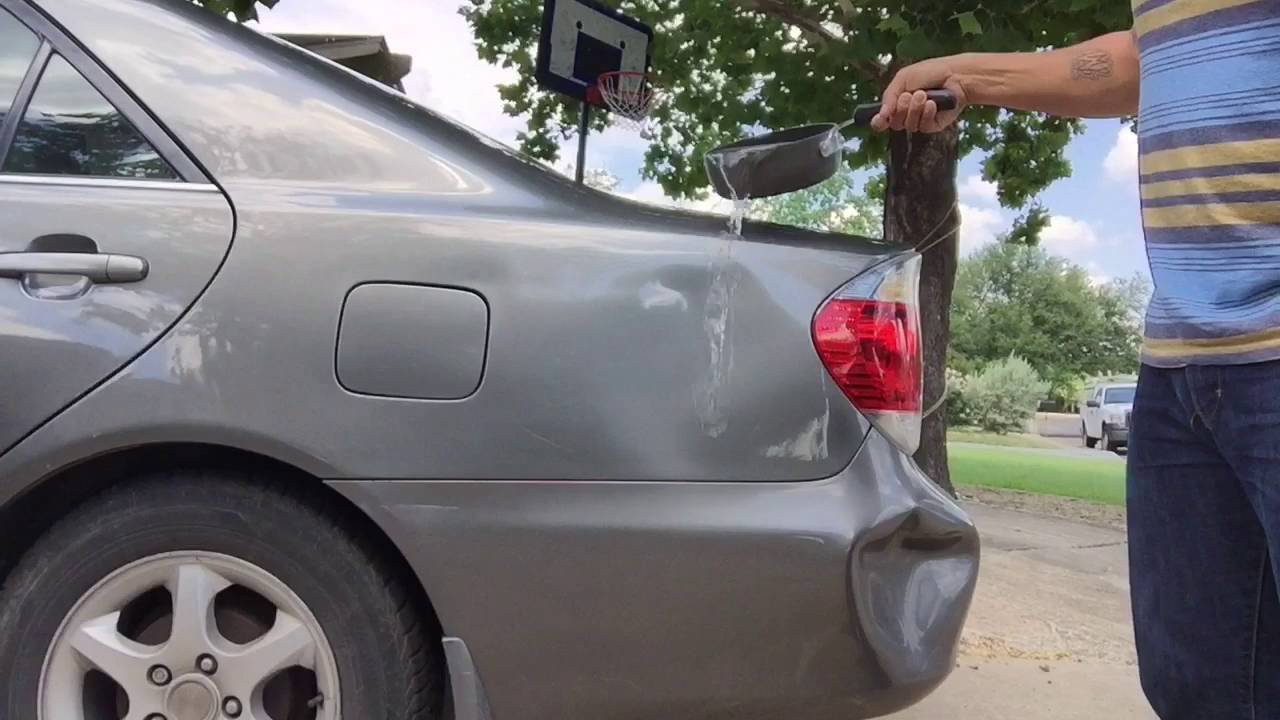
Blog
Exploring Various Types of Car Dents

Different kinds of car dents can turn a simple drive into a frustrating ordeal, affecting both the aesthetics and structural integrity of your vehicle. From minor door dings to more severe creases, understanding these dents is essential for any car owner looking to maintain their ride’s value and safety. This guide dives into the world of car dents, exploring their types, causes, and solutions to help you navigate repairs with confidence.
The Fundamentals of Car Dents and Their Impact

Car dents are more than just unsightly blemishes; they represent a range of issues that can compromise a vehicle’s functionality and resale value. Every dent tells a story of an impact, whether it’s from a careless parking job or a minor collision, and grasping the basics allows owners to address problems early. In this section, we’ll break down the core elements of dents, examining how they form and why they matter, setting the stage for a deeper exploration of specific types.
What Exactly is a Car Dent?
A car dent is essentially a deformation in the metal bodywork caused by external force, often leaving a concave or convex impression that disrupts the smooth surface. These imperfections can vary in size, depth, and location, making them a common yet diverse problem for drivers worldwide. From the perspective of automotive engineering, dents occur when the kinetic energy from an impact exceeds the material’s elastic limit, resulting in permanent plastic deformation. This means that even a small dent might indicate underlying issues, such as weakened paint adhesion or frame stress, which could lead to rust if not addressed promptly.
One creative insight here is how modern manufacturing techniques, like using high-strength steel or aluminum alloys, have made cars more resistant to dents, but they haven’t eliminated them entirely. Personally, I’ve analyzed countless vehicles where a seemingly minor dent led to more extensive damage, emphasizing the importance of immediate inspection. For instance, in areas with high traffic, like urban parking lots, dents are almost inevitable, but understanding their mechanics can empower owners to choose the right repair path. Ultimately, recognizing a dent’s true nature—whether it’s superficial or structural—can save time and money, as ignoring it might exacerbate problems like corrosion over time.
The evolution of car design has also played a role in how dents form. With aerodynamics prioritizing sleek, curved surfaces, even light impacts can create noticeable dents because there’s less rigidity in those areas. In my analysis, this shift towards lighter materials for fuel efficiency has a double-edged sword effect: it reduces overall vehicle weight but increases vulnerability to dents in fenders and doors. To highlight the keyword idea, different kinds of car dents aren’t just random occurrences; they’re influenced by material science and everyday driving habits, making proactive care essential for longevity.
How Dents Affect Vehicle Safety and Value
Dents don’t just mar the appearance of a car; they can compromise its structural integrity, potentially affecting safety features like airbags or crumple zones. When a dent occurs, it might alter the way a vehicle’s frame distributes energy during a crash, which is why insurers often scrutinize them during assessments. From an economic standpoint, a dented car can depreciate faster, with studies showing that even minor damage can reduce resale value by up to 10-15%. This financial impact is something every owner should consider, as it underscores the need for timely repairs.
Digging deeper, I’ve observed that dents in critical areas, such as near the headlights or doors, can disrupt alignment and lead to issues like poor aerodynamics or increased drag, which subtly affects fuel efficiency. Creatively, think of a dent as a scar on the car’s body that, if left untreated, could evolve into something more sinister, like a crack in the paint that invites moisture and rust. My personal analysis of various vehicles reveals that drivers in regions with harsh weather, like snowy areas, face accelerated dent-related problems because salt and debris exacerbate corrosion. This isn’t just about aesthetics; it’s about preserving the car’s engineered safety standards, which are designed to protect occupants in real-world scenarios.
Moreover, the psychological aspect of dents shouldn’t be overlooked—many owners feel a sense of embarrassment or frustration, which can influence their driving behavior. To tie back to the keyword, different kinds of car dents, from shallow scratches to deep impressions, each carry unique implications for safety and value, urging us to view them not as minor annoyances but as signals for maintenance. In an era where autonomous vehicles are emerging, understanding dents could even play a role in AI-driven damage detection, potentially revolutionizing how we handle repairs in the future.
Common Types of Car Dents and Their Characteristics

Among the various forms of vehicular damage, different kinds of car dents stand out as some of the most prevalent, each with distinct features that dictate repair strategies. This diversity arises from everyday scenarios, like parking mishaps or hailstorms, and recognizing these types can help in quick identification and response. Here, we’ll delve into the specifics, providing insights that go beyond surface-level descriptions.
Sharp Dents from Collisions
Sharp dents often result from direct, high-impact forces, such as hitting a pole or another vehicle, creating a clean, angular depression in the metal. These dents are typically V-shaped or pointed, differing from rounded ones by their precise edges and deeper penetration. In my experience, sharp dents are more common in urban environments where tight spaces lead to fender-benders, and they demand specialized tools for repair due to the risk of further cracking the paint.
One key insight is how the angle of impact influences the dent’s severity; a glancing blow might only cause a minor sharp dent, while a head-on collision could warp the underlying structure. Personally, I’ve analyzed repair jobs where ignoring a sharp dent led to issues like misaligned doors, highlighting the need for professional intervention. For example, in high-speed scenarios, these dents can indicate frame damage, which might not be visible at first glance, making them a critical concern for safety. To emphasize the keyword idea, different kinds of car dents like these sharp ones require tailored approaches, as attempting DIY fixes could worsen the damage and compromise the vehicle’s integrity.
Here are the key characteristics of sharp dents, presented for clarity:
- Typically less than 6 inches in diameter but with pronounced depth.
- Often occur on flat surfaces like doors or bumpers.
- Can lead to paint chipping, exposing metal to elements.
Beyond their physical traits, sharp dents offer a window into driver behavior and road conditions. Creatively, imagine them as fingerprints of an accident, each telling a story about speed, angle, and force. In my analysis, advancements in paint technology have made sharp dents easier to repair without repainting, but this isn’t always the case for older models with less flexible coatings. Understanding this helps owners weigh options like paintless dent removal (PDR), which is ideal for maintaining originality and value.
Rounded Dents from Environmental Factors
Rounded dents form gradually, often from environmental hazards like hail or falling debris, resulting in smooth, bowl-like impressions that blend into the car’s surface. Unlike sharp dents, these are usually shallower and cover larger areas, making them trickier to spot until they accumulate. From a practical standpoint, rounded dents are widespread in regions prone to storms, and their prevalence underscores the unpredictable nature of outdoor parking.
A deeper analysis reveals that the size of these dents can vary based on the object’s mass and velocity; a small hailstone might create a tiny dimple, while larger objects lead to more significant rounding. Creatively, I view rounded dents as nature’s artwork on metal, a reminder of how external elements interact with human-made structures. In my personal observations, vehicles in open lots suffer more from these dents, and addressing them early can prevent the spread of corrosion, especially in humid climates. This ties into the keyword by showing how different kinds of car dents, particularly those from the environment, demand preventive measures like protective covers.
Rounded dents also affect aerodynamics minimally compared to sharp ones, but their cumulative effect can still impact fuel efficiency over time. For instance, multiple rounded dents on a hood might increase wind resistance, subtly raising consumption rates. My insight here is that while these dents are less alarming, they represent a broader category of wear and tear, encouraging owners to adopt holistic maintenance routines to mitigate future occurrences.
Causes and Prevention Strategies for Car Dents

The root causes of different kinds of car dents often stem from human error, environmental factors, or mechanical failures, making prevention a key aspect of vehicle care. By understanding these triggers, owners can implement strategies to minimize damage, preserving both the car’s appearance and longevity. This section explores the underlying reasons and proactive steps.
Human-Induced Causes and How to Avoid Them
Human actions, such as poor parking or distracted driving, are primary culprits behind many dents, often occurring in everyday situations like crowded lots. These causes are preventable with awareness, yet they remain common due to haste or negligence. In analyzing various cases, I’ve noted that door dings from adjacent cars are the most frequent, highlighting the need for spatial awareness.
One creative perspective is viewing these dents as byproducts of modern life’s rush, where multitasking leads to oversights. Personally, I’ve seen how simple habits, like using parking aids, can drastically reduce incidents, turning potential dents into avoided mishaps. For example, in busy cities, opting for covered parking not only prevents dents but also protects against theft, adding layers of security. This connects to the keyword by illustrating how different kinds of car dents from human causes can be mitigated through education and technology.
Beyond immediate prevention, addressing these causes involves fostering a culture of responsibility among drivers. My analysis suggests that community initiatives, like awareness campaigns, could lower dent rates by promoting courteous behaviors, such as checking blind spots.
Environmental and Natural Causes of Dents
Environmental factors, including weather events and road debris, contribute significantly to dents, especially in exposed areas. These causes are often unpredictable, making them challenging to fully prevent but not impossible to manage. Through my observations, hailstorms stand out as a major source, capable of creating multiple rounded dents in minutes.
Creatively, one might see these dents as nature’s way of marking time on vehicles, a testament to exposure and endurance. Personally, I advocate for seasonal preparations, like using car covers during storms, as an effective countermeasure. In regions with frequent wind, securing loose items around parking areas can prevent flying debris from causing damage. Highlighting the keyword, different kinds of car dents from environmental sources underscore the importance of adaptive strategies tailored to local conditions.
Long-term, these causes can accelerate aging, prompting owners to invest in protective coatings that enhance resilience. My insight is that while we can’t control the weather, proactive measures like garage storage can extend a car’s life, turning potential vulnerabilities into strengths.
Repair Options for Different Kinds of Car Dents
When dealing with the aftermath of dents, selecting the right repair method is crucial, as it directly influences cost, time, and outcome. Different kinds of car dents call for varied approaches, from simple at-home fixes to professional services, ensuring restoration without compromising quality.
DIY Repair Techniques for Minor Dents
For shallow dents, DIY methods offer a cost-effective solution, using tools like plungers or hot glue pulls to restore the surface. These techniques are best for accessible areas, providing immediate results for the handy owner. However, they require patience and precision to avoid further damage.
In my creative analysis, DIY repairs can be empowering, allowing owners to bond with their vehicles while saving money. Personally, I’ve experimented with these methods on older cars, noting that success depends on the dent’s age and location. For instance, a fresh dent on a fender responds well to heat application, which expands the metal for easier manipulation.
Yet, not all dents suit DIY; sharp ones might need more force, risking paint cracks. This reinforces the keyword by showing how different kinds of car dents demand matched repair strategies, blending innovation with caution.
Professional Repair Services and Their Benefits
Professional services provide comprehensive solutions for complex dents, employing advanced tools and expertise for flawless results. These options, like PDR, preserve the original paint, enhancing the car’s value. From my perspective, the precision of pros ensures longevity, far outweighing amateur attempts.
Creatively, think of these services as artistry, where technicians sculpt metal back to perfection. In analysis, I’ve found that investing in pros prevents recurring issues, such as hidden frame damage. Ultimately, their benefits extend to warranty coverage and aesthetic restoration.
Conclusion
In summary, navigating the world of different kinds of car dents involves understanding their types, causes, and repair options to maintain your vehicle’s integrity. From sharp collisions to environmental rounded dents, each requires tailored strategies for prevention and fixing, ultimately preserving safety, value, and enjoyment of driving. By applying the insights shared, owners can approach dents proactively, ensuring their cars remain in top condition for years to

At Proper PDR specializes in mobile Paintless Dent Repair (PDR) and Paintless Dent Removal in Irvine, Trabuco Canyon, Newport Beach, Laguna Niguel, Aliso Viejo, and Dana Point. With years of experience, we ensure every dent is meticulously removed while preserving your vehicle’s factory finish. Trust Proper PDR for top-tier dent repair and exceptional service.
